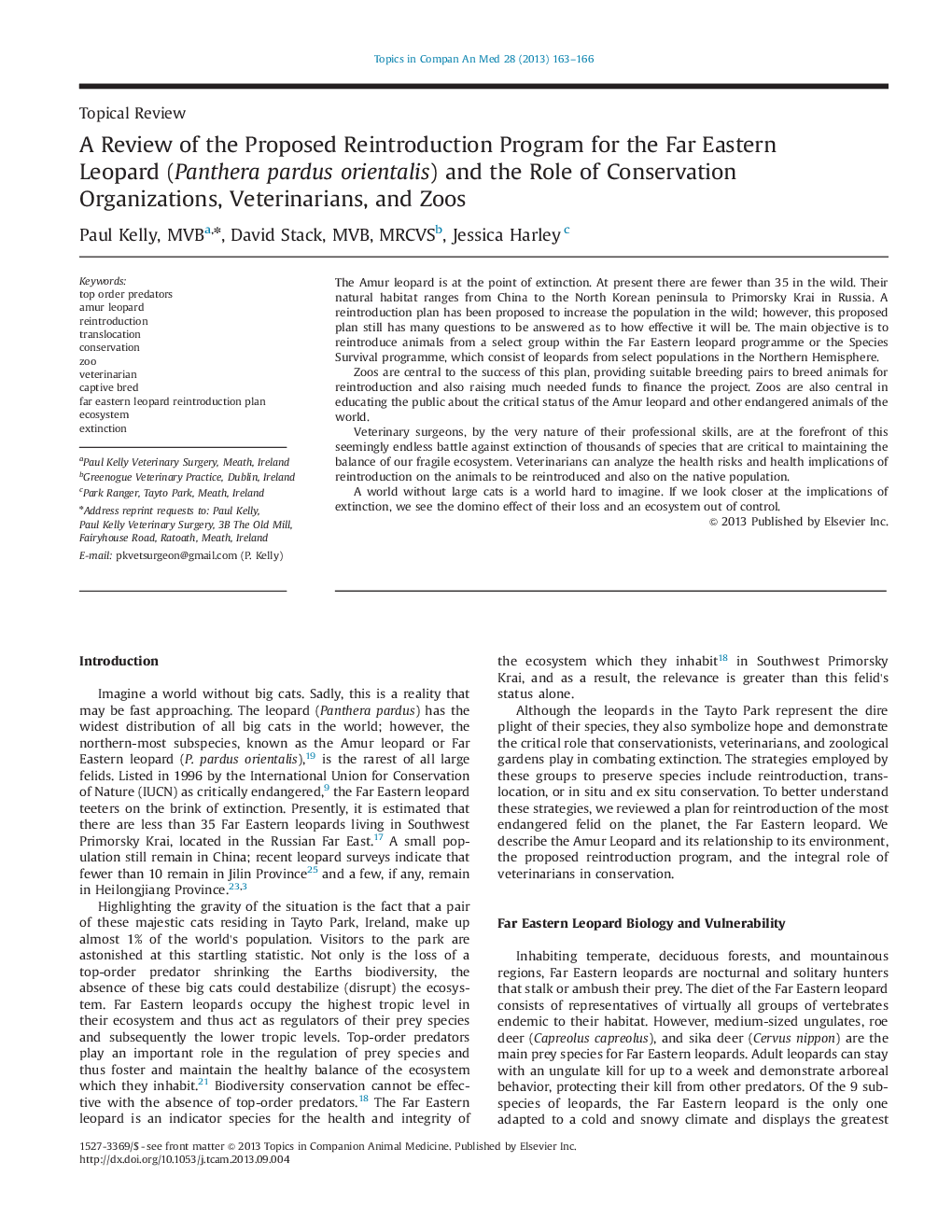| Article ID | Journal | Published Year | Pages | File Type |
|---|---|---|---|---|
| 2401137 | Topics in Companion Animal Medicine | 2013 | 4 Pages |
The Amur leopard is at the point of extinction. At present there are fewer than 35 in the wild. Their natural habitat ranges from China to the North Korean peninsula to Primorsky Krai in Russia. A reintroduction plan has been proposed to increase the population in the wild; however, this proposed plan still has many questions to be answered as to how effective it will be. The main objective is to reintroduce animals from a select group within the Far Eastern leopard programme or the Species Survival programme, which consist of leopards from select populations in the Northern Hemisphere.Zoos are central to the success of this plan, providing suitable breeding pairs to breed animals for reintroduction and also raising much needed funds to finance the project. Zoos are also central in educating the public about the critical status of the Amur leopard and other endangered animals of the world.Veterinary surgeons, by the very nature of their professional skills, are at the forefront of this seemingly endless battle against extinction of thousands of species that are critical to maintaining the balance of our fragile ecosystem. Veterinarians can analyze the health risks and health implications of reintroduction on the animals to be reintroduced and also on the native population.A world without large cats is a world hard to imagine. If we look closer at the implications of extinction, we see the domino effect of their loss and an ecosystem out of control.
